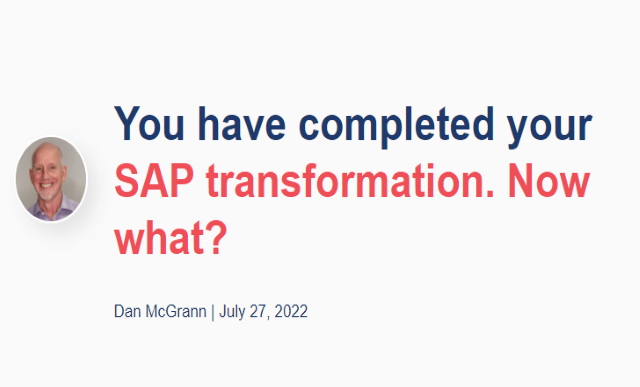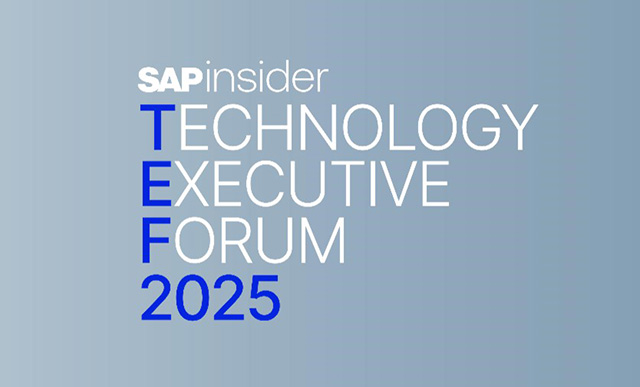Strategies for a successful S/4HANA migration
Migrating to SAP
S/4HANA is not a choice anymore; it is a necessity. But embarking on such a journey requires more than just a business case. No transformation process is easy. Organizations are always in search of platforms and tools to accelerate digital transformations. But what are the hurdles organizations face when they decide to walk this path? What strategies should organizations use for a successful S/4HANA migration?
In the second part of the interview series with Craig Brown, Chief Transformation Architect at Xceleon, Brown talks about the business and technology hurdles that organizations face and the strategies that organizations should take to migrate successfully to S/4HANA. Brown emphasizes the importance of Process Intelligence and highlights that the biggest issue with organizations is that they do not document their business processes or store them in a single source of the truth. Brown also stresses building a lean center of excellence where a group of stakeholders handle and maintain processes for the migration project. This center of excellence takes decisions on requirements, approvals, deployment, testing, and decisions regarding the tools that will be required or sunset in the process.
Learn more about Xceleon here.
Read the interview excerpts below.
SAPinsider: What are the biggest hurdles that companies face when they embark on the migration journey to S/4HANA?
Craig Brown: The most significant issue seen with organizations is that most do not document their business processes and store them in a single source of truth. This is crucial because knowing what business processes to transform is crucial for any transformation initiative. From a technology perspective, resources do not necessarily support an organization holistically because they support configurations and objects or maintain, and support structures and objects required to hold. And this is different from what the company needs from a business process operation perspective.
Organizations need to document their processes and can use the SAP tool called Focused Build for SAP Solution Manager, which makes it easy to record all business processes and supports customers with a seamless, tool-based, requirements-to-deploy process. Process Management Module is based on the scenario process and process steps. For example, the solution manager can document the process if the technique relates to a sales order. A single view generated by this tool allows the business to see how their business processes are functioning and how they are registered.
From a technical perspective, the technical resources look at the same hierarchy. However, a library of technical components is assigned to the elements in that solution documentation. Focused Build also allows organizations to add requirements to processes at any level. For example, for sales, a step can be added into Focused Build through the requirement management module in the innovation delivery platform. Once the requirement request is made, the technical resource can look at that request, make the necessary updates at the exact location in that business process hierarchy, configure and test, and deploy that functionality into the production system.
SAPinsider: How do you think process intelligence comes into the picture?
Craig Brown: When we talk about process optimization and intelligence, SAP tools are helpful. For example, SAP Signavio, allows the organization to look at process intelligence as a functionality. For instance, not having a business process hierarchy becomes a challenge for a business. Business process hierarchy can be built with the help of a process intelligence toolset, data mining exercise, or extraction from the existing systems. When organizations have established a structure, they can use the solution manager to document processes, which will serve as a starting point for maintaining innovation, whether they migrate to S/4HANA as a program or support any infrastructure, ECC or S/4HANA in the future tense efficiently and effectively.
SAPinsider: What team structure should companies deploy to migrate successfully to S/4HANA?
Craig Brown: Many organizations use system integrators for S/4HANA migration, while others do it by themselves. However, one prerequisite for success is to form a lean center of excellence. It means that a group of stakeholders handle and maintain processes for the migration project. This center of excellence then takes decisions on requirements, approvals, deployment, testing, and decisions regarding the tools that will be required or sunset in the process. The center will also govern the activities that are within the IT environment. Once all these elements are managed and the innovation delivery platform is deployed, technical resources either from an SI or from an internal group are assigned. This scope is identified and approved by COE leadership.
The proper way to structure resources during the integration test for S/4HANA is to have this center of excellence. Having help at the management level to sit in the COE is critical. Also, having the resources from the internal IT group or the contracted SI is helpful when trying to articulate the message and scope.
SAPinsider: When organizations are working with system integrators, how do you define the scope for the whole migration? What is one thing that customers can do to control their S/4HANA scope when working with a system integrator?
Craig Brown: I mentioned SAP Signavio earlier. Signavio helps organizations to plan and manage the scope. But organizations can manage the scope by ensuring that the business gets what it needs from a functionality perspective. Once an organization identifies the business processes, it can take other tool sets embedded within the SAP umbrella. For example, the S/4HANA readiness check, perform analysis, and aligning those insights with the business scenario recommendation toolset to see what they currently have today from a functionality perspective, and then map those into an S/4HANA functionality environment.
The ideal way is to ensure that 80 percent is an out-of-the-box standard functionality of S/4HANA and 20 percent customization is used. Because if you did that, that gives you an excellent percentage, a good equation to say that I'm going to have an excellent TCO, the total cost of ownership because I'm not going to have 100 percent or dramatic amount of support that has to do with customized solutions. This is out of the box SAP work or SAP functionalities.
Using standard functionalities guarantees that the system will work the way SAP developed it to do. The best approach for that, again, is to take the out-of-the-box functionalities, take the S/4HANA functionality or demonstrations, demo that functionality to the business, and if the company says, "Hey, I can work with this functionality, standard functionality will suffice, and no customization is needed.” If changes are required, then a requirement is needed to track the functionality enhancement.
SAPinsider: What should customers consider in each SAP activate phase of the transformation?
Craig Brown: Number one, when an organization looks at the activate methodology’s preparation phase, it prepares its environment for operations. This requires assessments related to infrastructure, business processes, and what the organization has currently in place, and will also include resources and people, to assess if they are ready for this deployment. All these elements can be pulled together into a business case for S/4HANA and presented to the leadership.
In the explore phase, organizations are looking at having all components in place, like the business process, tools, innovation delivery platform configured and ready to be leveraged and the resources. When these elements are in place, organizations can start system demos to see whether the standard functionality of S/4HANA will fit their environment. And if it does not, an organization can build a case for customizing required functionalities.
The next phase is the realization phase, in which, organizations will assign all such requirements and activities to the development team, either internally or to the system integrator. When an organization sets these activities and conditions, it can have complete control over the scope of migration, enabling the organization to measure and manage the process and ensure that the system integrators configure the system exactly how it needs it. When the system configuration or customization is done, the testing process ensures that all components work properly, both from a technical integration and UAT perspective and performance testing. If testing is satisfactory, deployment into the production environment can occur, which is the fourth phase of the activation methodology.
In the deployment phase, an organization is looking at billing out all their go-live procedures, documentation, and going through a hyper-care session, which means having the solution pre-released in the production environment to different segments of the business. This determines if the system is working well; if it doesn't, tickets can be raised through the production environment or production support environment until the solution is ready to be rolled out to other departments or areas within the business.
The final stage is going to be a run stage. Once the solution is rolled out to the entire organization, production environment system support will be required.
View Part 1 of the interview here.
[embed width=" 600" height="600"] https://youtu.be/iLOgq2Wn__k[/embed]









